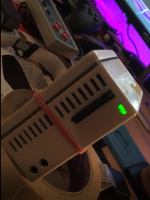Has anybody gotten System 7 working on a Rasberry Pi lately?
Found this great article / video on the process:
https://www.novaspirit.com/2017/03/28/running-mac-os-7-on-raspberry-pi-with-color/
To put into my new Nutshell Case
https://www.etsy.com/shop/NutshellCases
Excited to start on this project, easy way to stick this on my work desk and get to play around w/System 7 overlapping,
Would like to avoid any major landmines but planning to follow the directions above and go from there.
Found this great article / video on the process:
https://www.novaspirit.com/2017/03/28/running-mac-os-7-on-raspberry-pi-with-color/
To put into my new Nutshell Case
https://www.etsy.com/shop/NutshellCases
Excited to start on this project, easy way to stick this on my work desk and get to play around w/System 7 overlapping,
Would like to avoid any major landmines but planning to follow the directions above and go from there.
Last edited by a moderator:

